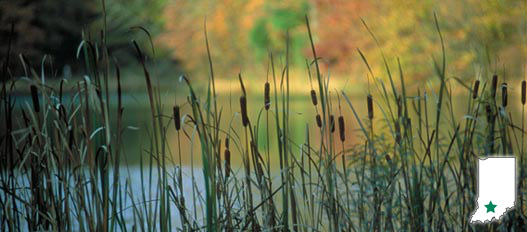Camping
Primitive (class C) camping is available for a fee. There are 26 designated campsites located within the forest. Pit toilets and drinking water are available near sites. A self check-in station is located in the campground. We do not accept reservations, camping is available on a first come, first served basis.
Fishing
Martin State Forest has three lakes on the property:
- Martin Lake (3 acres)
- Hardwood Lake (4 acres)
- Pine Lake (3 acres)
Martin Lake and Hardwood Lake are open to fishing with a valid Indiana fishing license. While Pine Lake is usually too heavily vegetated to fish, it can be a nice area for viewing wildlife.
Species of fish are channel catfish, bluegill and largemouth bass, as well as some crappie and redear. Boat motors are limited to electric trolling motors. Swimming is prohibited in all lakes.
Hunting
Whitetail deer, turkey, gray squirrel, rabbit and raccoon. A valid hunting license is required. See Where to Hunt for more information.
Picnicking
Several picnic areas including four picnic shelters are available for day use. Picnic areas, with picnic tables and grills, are located throughout the forest.
Arboretum
The Hoosier Woodland Arboretum is located adjacent to the state forest office, and is open year round without charge. Spring, summer and fall are the best times to visit the arboretum. The trail through the arboretum is self-guiding and the walking is easy. You may park your vehicle across from the arboretum entrance or at the forest office. An accessible parking spot and connecting trail are located adjacent to the arboretum. The arboretum contains about three acres with a ¼ mile winding trail. There is a shorter segment of the trail that is wheelchair accessible in dry weather.
This informal arboretum was established in an existing wooded area. Additional species have been added to those already present, and the collection currently contains about 60 different species identified by signs along the trail. The most common species, such as the oaks and hickories, are represented within the arboretum by several specimens. These specimens were present when the arboretum was established. Unlike many arboretums, our goal is not to provide a great number of different species, but to offer a representation of the common woodland trees in Indiana.


